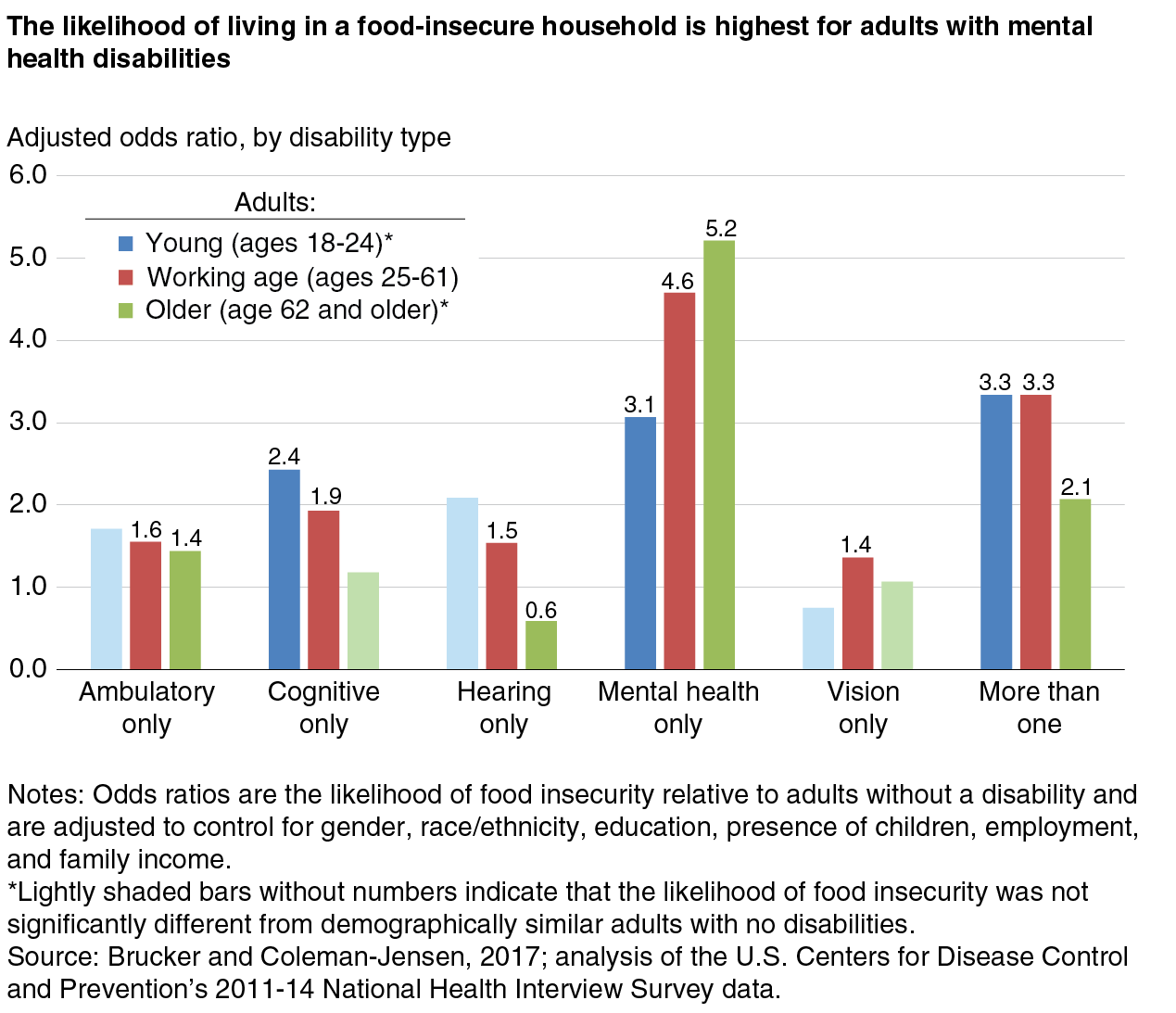
Adults With Disabilities, Especially Mental Health Disabilities, Are at a Higher Risk for Food Insecurity
- by Alisha Coleman-Jensen and Debra L. Brucker
- 9/5/2017
People with disabilities experience higher levels of poverty and material hardship than others and are also at increased risk for food insecurity—at times having difficulty meeting basic food needs due to lack of resources. Of the U.S. population, over 13 percent has some form of disability. Across the adult lifespan and across income levels, adults with disabilities are more likely to be in food-insecure households than adults without disabilities.
New research, funded by USDA, used the U.S. Centers for Disease Control and Prevention’s National Health Interview Survey (NHIS) to examine the relationship between food security and five categories of disabilities: ambulatory, cognitive, hearing, vision, and mental health. Across the adult lifespan, disabilities have different effects, and many programs and supports for people with disabilities are targeted to specific age groups. Consequently, the study examined adults at three life stages: young adults (ages 18-24), working-age adults (ages 25-61), and older adults (age 62 and older).
The research found that adults with disabilities—mental health disabilities in particular—are at an increased risk of living in a household that is food insecure. Working-age adults have higher odds of food insecurity than young adults. Older adults have lower odds of food insecurity than young and working-age adults. Some of these differences may be explained by the different levels of access such populations have to government programs such as employment services, Supplemental Security Income, and Social Security.
After accounting for economic and demographic characteristics, such as household income and employment status, the analysis showed that adults with a mental health disability were three to five times more likely to live in a food-insecure household, depending on age, than demographically similar adults without a disability. Mental health disabilities were the only type of disability that resulted in a significantly higher likelihood of food insecurity for all age groups considered.
For some other types of disabilities, the relationship with food insecurity was less pronounced. Working-age adults with a vision disability were 1.4 times more likely to live in a food-insecure household as demographically similar working-age adults without a disability. Young adults and older adults with a vision disability were not significantly more likely to be food insecure than adults without disabilities. This research highlights the need for a greater understanding of the complex needs of people with mental health disabilities and programs to improve their food security.
This article is drawn from:
- “Food Insecurity Across the Adult Lifespan for Persons with Disabilities,” by Debra L. Brucker and Alisha Coleman-Jensen. (2017). Journal of Disability Policy Studies, doi: 10.1177/1044207317710701.
You may also like:
- “Food security among young adults with disabilities in the United States: Findings from the National Health Interview Survey,” by Debra L. Brucker. (2015). Disability and Health Journal, 9, 2, 298-305.
- “Food insecurity among young adults with intellectual and developmental disabilities in the United States: Evidence from the National Health Interview Survey,” by Debra L. Brucker and Derek Nord . (2016). American Journal on Intellectual and Developmental Disabilities, 121, 6, 520-532.


